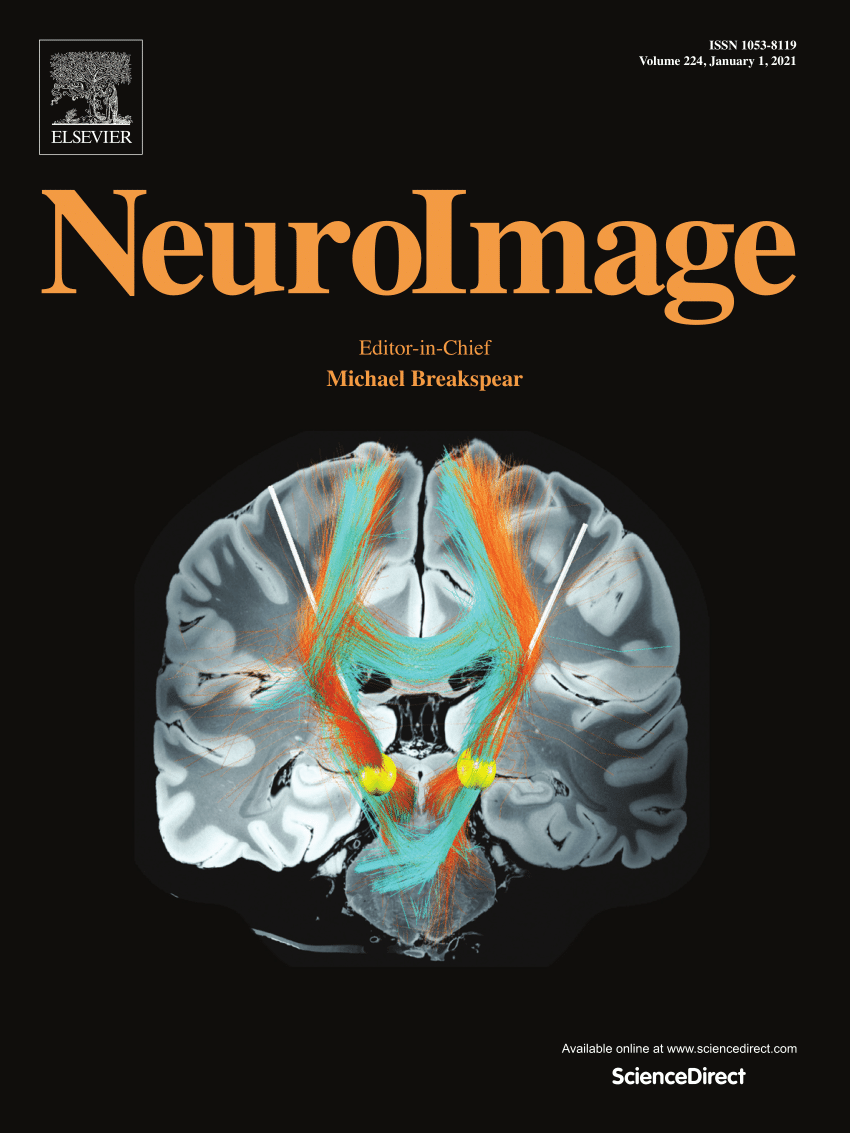An interaction-centric approach for quantifying eye-to-eye reciprocal interaction
IF 4.7
2区 医学
Q1 NEUROIMAGING
引用次数: 0
Abstract
This study presents an interaction-centric framework for analytically investigating brain-to-brain dynamics during eye contact, advancing beyond the traditional spectator model. The foundation of the interactor approach is to delineate the interaction. To achieve this, simultaneous brain activity engaged in eye contact was captured using hyperscanning fMRI. The BOLD responses were first divided into eye-to-eye reciprocal interaction and eye-to-face non-reciprocal communication based on the experimental design; then the reciprocal interaction response was further differentiated into sensory-based (exogenous) and mind-based (endogenous) components to characterize agentic interaction. The proposed interactor approach not only determines interaction from dyadic brain states but also computes emergent interactive brain states arising from the interaction. To achieve these, reciprocal interactive fMRI responses were quantified into an interaction matrix, from which interaction-induced communication channels were identified using Correspondence Analysis, and information flow within those channels was measured with Mutual Information. The advantage of the interactor approach is its ability to reveal emergent dyadic brain states that a spectator approach cannot fully unravel. When applied to parent-child eye contact, this method confirmed existing developmental findings, clarified previous inconsistencies, and uncovered new insights into how reciprocal social engagement shapes brain function.
以交互为中心的眼对眼交互量化方法。
本研究提出了一个以互动为中心的框架,用于分析研究眼睛接触过程中的脑对脑动力学,超越了传统的观众模型。交互器方法的基础是描述交互。为了实现这一目标,使用超扫描功能磁共振成像捕捉到同时进行眼神交流的大脑活动。首先根据实验设计将BOLD反应分为眼对眼交互和眼对脸非交互;然后,将相互作用反应进一步划分为基于感觉(外源性)和基于心理(内源性)的成分来表征代理相互作用。所提出的交互器方法不仅确定了二元脑状态的交互,而且计算了交互产生的紧急交互脑状态。为了实现这些目标,相互作用的fMRI反应被量化为一个相互作用矩阵,从中使用对应分析确定相互作用诱导的通信通道,并使用互信息测量这些通道内的信息流。互动者方法的优势在于,它能够揭示旁观者方法无法完全揭示的突发性二元大脑状态。当应用于亲子眼神交流时,这种方法证实了现有的发展发现,澄清了之前的不一致,并揭示了互惠社会参与如何影响大脑功能的新见解。
本文章由计算机程序翻译,如有差异,请以英文原文为准。
求助全文
约1分钟内获得全文
求助全文
来源期刊

NeuroImage
医学-核医学
CiteScore
11.30
自引率
10.50%
发文量
809
审稿时长
63 days
期刊介绍:
NeuroImage, a Journal of Brain Function provides a vehicle for communicating important advances in acquiring, analyzing, and modelling neuroimaging data and in applying these techniques to the study of structure-function and brain-behavior relationships. Though the emphasis is on the macroscopic level of human brain organization, meso-and microscopic neuroimaging across all species will be considered if informative for understanding the aforementioned relationships.
 求助内容:
求助内容: 应助结果提醒方式:
应助结果提醒方式:


